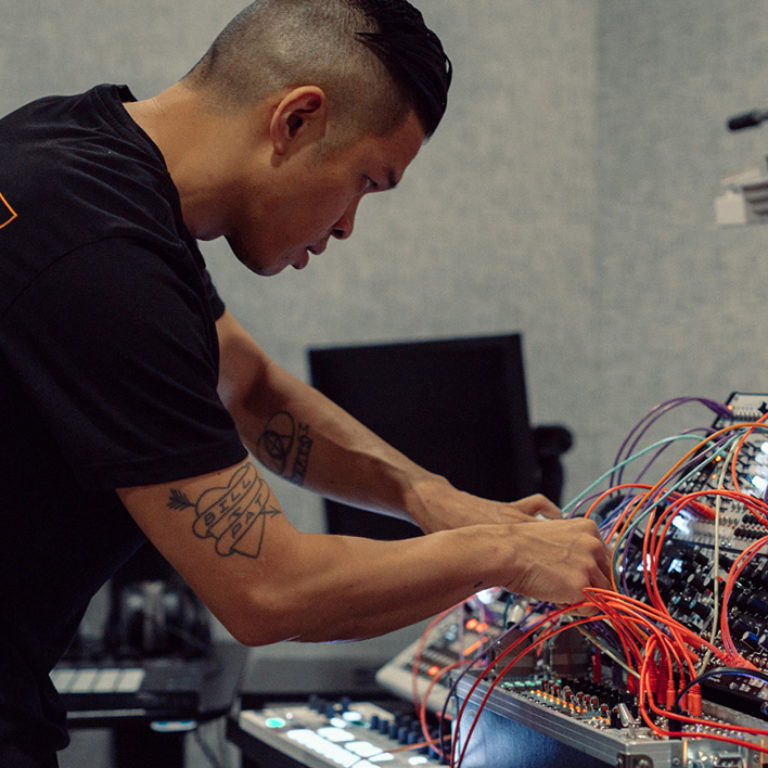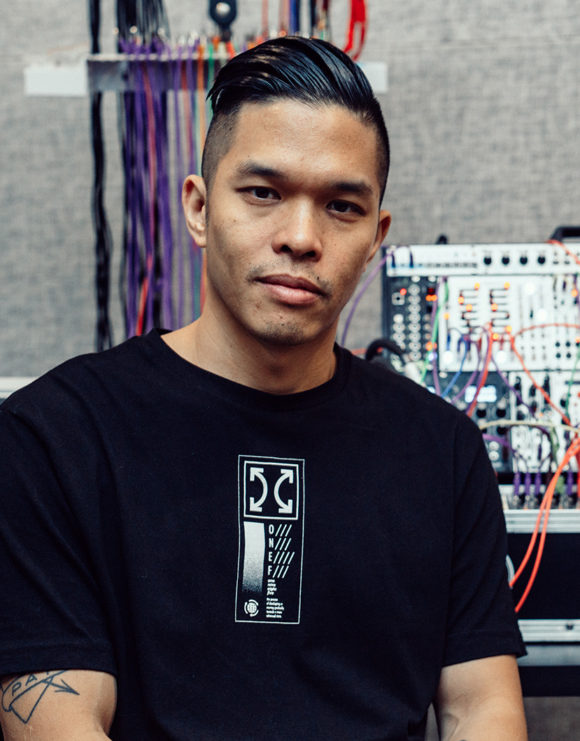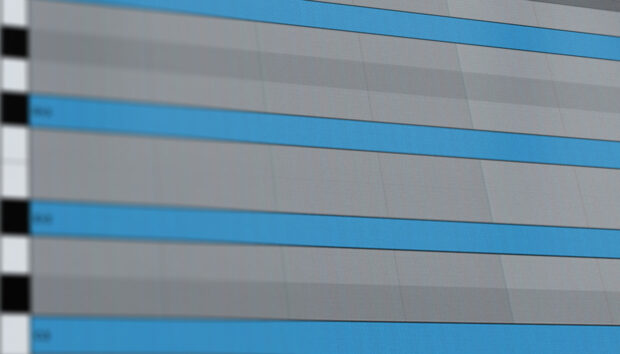From his acclaimed IDM excursions as edIT on Planet Mu, to conquering the alternative dance music spectrum as a member of The Glitch Mob, Edward Ma has consistently pushed electronica’s boundaries with his forward-thinking approach to sound design and production.
Starting out as an underground hip hop DJ in the second room of L.A.’s legendary Konkrete Jungle drum and bass night, Ma’s career has gone from strength to strength. He’s produced for the likes of Aloe Blacc and, as a member of The Glitch Mob, his remix credits include artists such as Daft Punk, Metallica, The Prodigy and more.
We caught up with Ma to talk about his latest obsession, modular synthesis, and in particular how he uses REAKTOR BLOCKS to create sounds for The Glitch Mob, along with his unique and captivating Instagram videos.
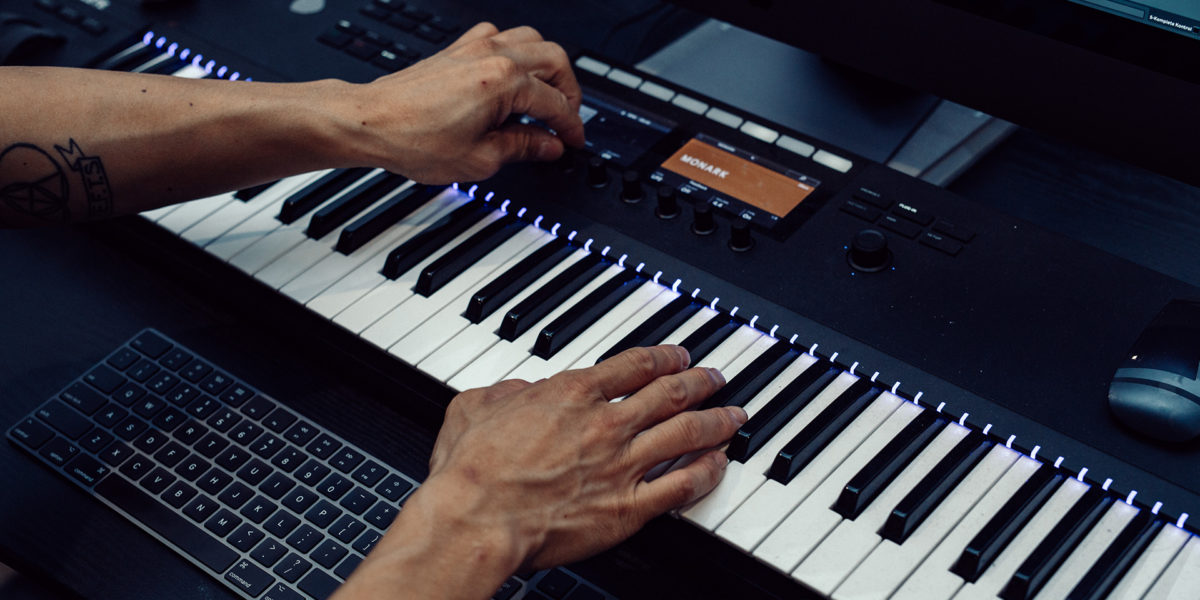
What’s the appeal of REAKTOR BLOCKS for you?
When Blocks came out the first time around, it was extremely fascinating to me, having come from a Max/MSP background and also having used Reaktor for over ten years. I’ve been using Reaktor since its inception – you know I’m 40 years old, so I’ve been at this for a while! When Reaktor first came out, it wasn’t very user-friendly, even if you had read the manual front-to-back. If you wanted to build anything you had to do it from scratch and make the user interface too, so that could be a daunting thing.
When Blocks first came out, my take on it was that it was an attempt at a Eurorack-style modular environment. It was done in such an elegant way, but there was a new spin on it. Having A and B modulator inputs for every single Block blew things wide open. With modular hardware, if you want to modulate something, there has to be a CV In for it, so you’re not necessarily going to be able to modulate every single knob on a piece of gear that you want to. That’s even the case in the VCV Rack.
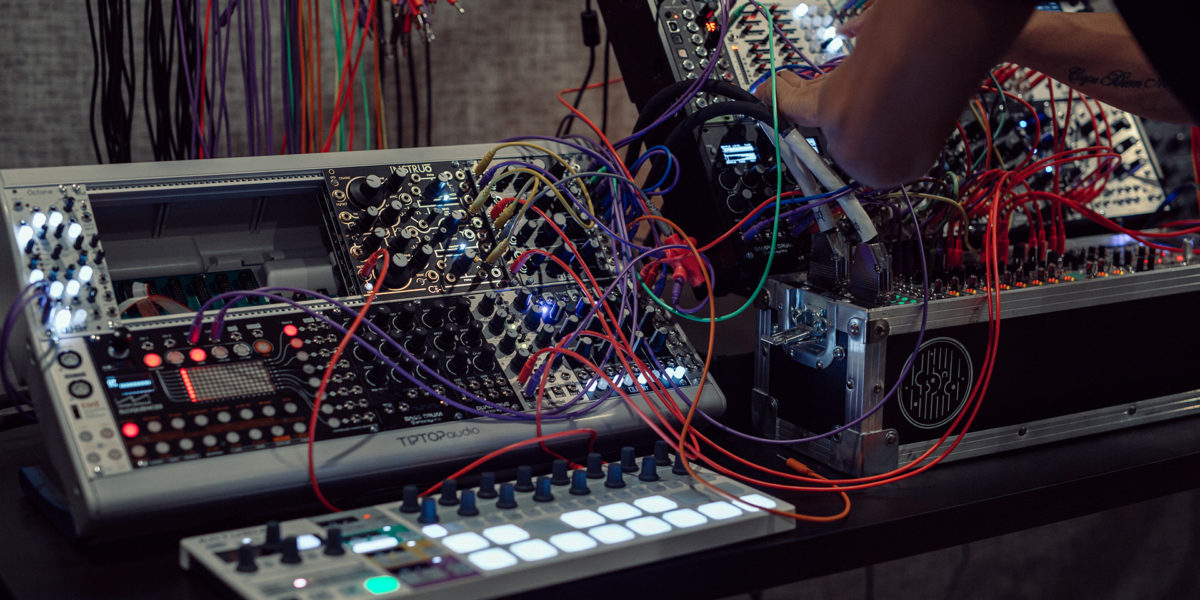
What’s cool about modular is being able to modulate anything that you want, and I think Native really tapped into that from the get-go. Although, with the first iteration of Blocks, you still had to patch everything in Structure View, which was slowing me down a little bit from a workflow standpoint. Then, once 6.3 came out with the front-facing patching, it was like, ‘OK, they just took something that was already amazing and just really refined it to the point that things can happen really quickly’. You can now just ress Enter, drop in the Block, you don’t have to go into Structure, you can patch everything on the front… it really blew the doors wide open for me.
Judging from your Instagram you seem to have become deeply involved in modular synthesis.
Yes, Blocks 6.3 really blew open my creativity, and it actually prompted the jump to get some hardware Eurorack stuff!
Do you use BLOCKS with your Eurorack hardware?
I just acquired the hardware to do that yesterday. I finally got an Expert Sleepers ES-8, so that’s definitely territory that I’m looking to traverse into. The next step is to merge my entire Eurorack rig with Reaktor. I always knew that I wanted to build a hybrid system so I wanted Reaktor Blocks to be a big part of my entire Eurorack rig. I’ve already spent a ridiculous amount of money on the case that I have right now. I can’t even imagine having two or three of these cases. You’d just go bankrupt at some point!
The ability to have Reaktor, and have as many modules as you want, really blows things wide open, especially from the standpoint of the more utilitarian modules, stuff like LFOs, function generators, things of that sort. It’s really nice to know that I have the ability to have a lot of them on tap. A lot more so than I would in hardware form.
You seem eager to push the envelope of what’s capable with the technology, and in one of your Instagram posts you mention making your computer ‘cry DSP tears’.
The way that Reaktor works in its current state is that it uses a single core. That’s something that I’ve been trying to lobby with Native on, and I’ve been in direct contact with the people that are responsible for developing Blocks. One of the limitations right now is that even if you have a hexacore MacBook Pro, only one of your cores is being tapped. Obviously, the way around that in Ableton Live is to use multiple instances of Reaktor across multiple tracks to spread out the load. But one of my favourite things is actually to not open Ableton at all, just to open Reaktor stand alone and create something out of nothing. Really, where the most joy comes from is the exploration, like ‘today I’m going to sit down and make something that’s that’s never been created before’. I like to create self-generative songs and environments all out of one single patch.
You’re creating machines to make music rather than the music itself.
Yeah totally. One of my favourite things with Reaktor is that you’re creating a massive algorithm that you’re really just defining all the rules of, where things can go and how things can interact, then really just letting the patch compose itself. That’s really kind of my favourite thing about using Reaktor Blocks. It’s really different than working on music in a DAW where it’s like, ‘OK let me make a MIDI track, and on this MIDI track I’m going to make a bassline, I’m going to program it all in MIDI on the piano roll’ in a very traditional, predictable fashion.
I still have to do that on a daily basis with The Glitch Mob, obviously, and there’s a time and place for that. But when I use Reaktor Blocks, it’s just such a different way of approaching music for me. I’ve gotten so much fulfilment out of it in the past year, diving deep with the whole thing. It’s really just become a staple of mine, and I really think it’s something that’s really underutilized and untapped in general right now. Whether you’re dealing with hardware modular or software modular, I truly feel it’s the easiest platform to get into.
Now Blocks Basic is included with the free Reaktor Player, it’s really reduced the barrier to entry for modular synthesis.
Totally, and not only that but Toybox Audio also has a free bundle. Some of their best Blocks are in that free bundle, so that’s highly recommended. Then obviously Michael Hetrick’s Euro Reakt too; there’s a free version of that and there’s a lot of good stuff in there.
How much does Blocks feature in your The Glitch Mob productions?
It’s definitely made its way into all of our most recent productions that will be coming out later this year. There’s a collab that we did with this kid called 1788-L, where I made a lot of the bass and lead sounds out of a bunch of Toybox stuff, all from scratch. One of the upsides of doing it that way, as opposed to making a synth in Massive or Serum or whatever, is that a lot of Blocks have an input for Frequency Modulation which is really quite a unique tonal characteristic that a lot of other soft synths don’t have. In the Eurorack world, every single module has an input for FM it’s just a super common thing you don’t even think twice about, but in plug-in form it’s not so common at all. You can’t always just take an LFO and set it up to audio rate and use that to modulate pitch or frequency on a synth.
In terms of soft synths, only Blocks seems to have that level of resolution in the way it sounds when you go up into that audio rate, and the way it handles distortion. I’ll just take a Bento Box wired into an FM port of any of the Blocks, set it to the audio rate, and you’ll get that ring-mod kind of sound where it’s beginning to distort, and almost sounds like its bitcrushing. When Blocks does that, it’s like… there is no other soft synth that sounds like that in my opinion.
photo credits: Ethan Gulley








